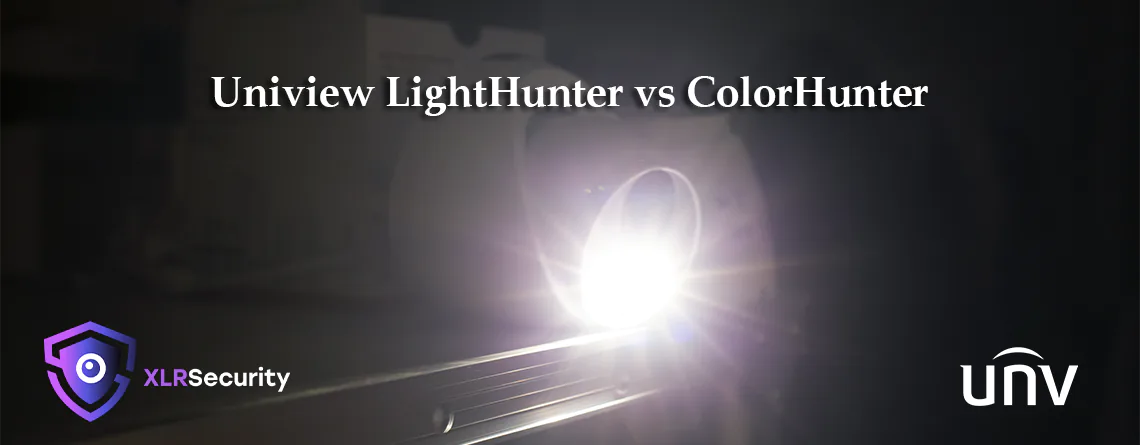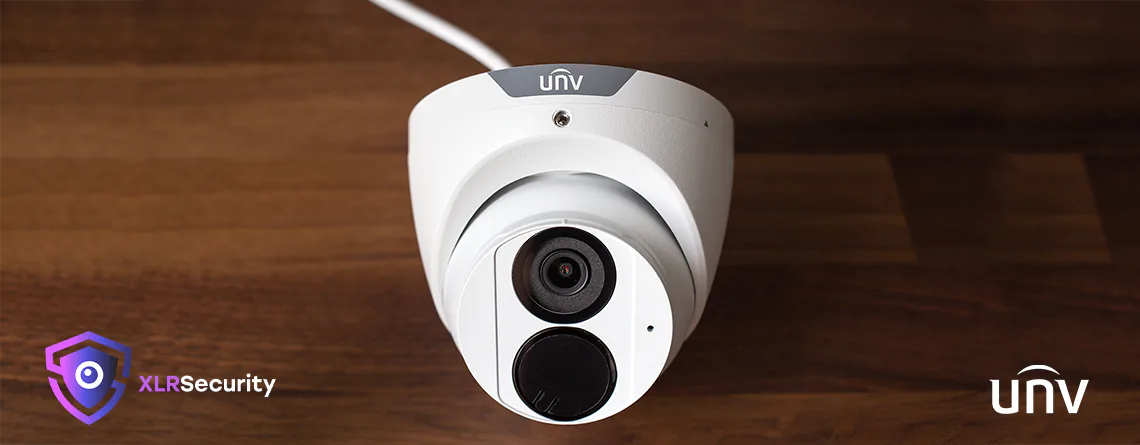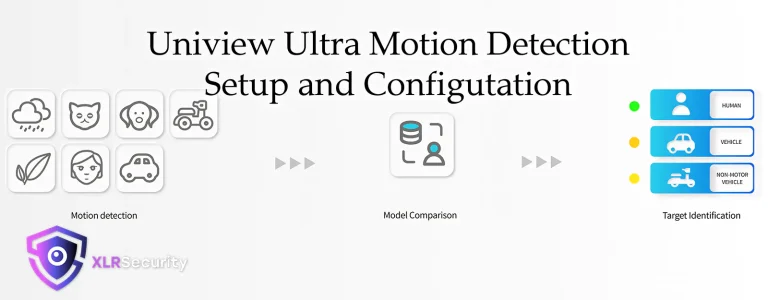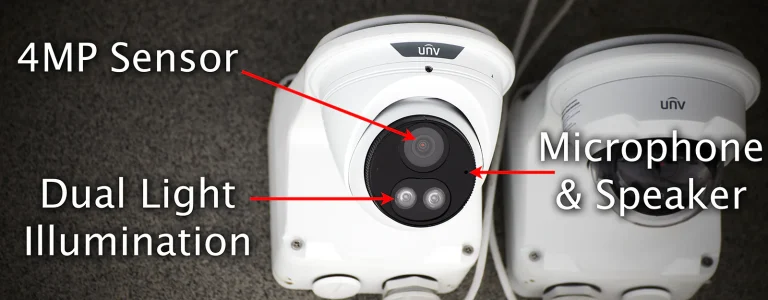Introduction to Uniview LightHunter & ColorHunter Cameras
In 2019, Uniview released their LightHunter series cameras.[1] Their LightHunter technology significantly improves image quality in low-light scenes. Innovative technologies are used, such as TDNR noise reduction, large BSI image sensors, and circuit noise reduction. Additionally, Uniview uses a special lens that allows for 36% more light to reach the image sensor compared to a conventional camera lens.
Continuing with the theme of image quality in low-light, Uniview announced their ColorHunter cameras towards the end of 2020.[2] By taking the LightHunter technology and adding supplemental lights onto the camera, Uniview has created a product that guarantees clear, colourful imaging in every scenario. Uniview ColorHunter LEDs produce neutral white light (~3500K) which reduces light pollution and guarantees colour accuracy.
Cameras Chosen for Testing
In order to compare the performance between Uniview ColorHunter and LightHunter cameras, we decided to test two popular UNV turret cameras.
The first camera chosen was IPC3615SB-ADF28KM-I0: A LightHunter camera with a 5MP image sensor and 0.003 min lux illumination at F1.6.
For comparison, we choose Uniview’s 5MP ColorHunter IPC3615SE-ADF28KM-WL-I0. Both cameras have a 5MP image sensor, however the ColorHunter has slightly better low-light specs on paper with 0.001 min lux illumination at F1.0[*].
*In photography, a lower F-stop number results in larger lens aperture and better light gathering ability. Moving from F1.6 to F1.0 results in 2.56 times more light reaching the image sensor. This will be apparent in the results later in this article.
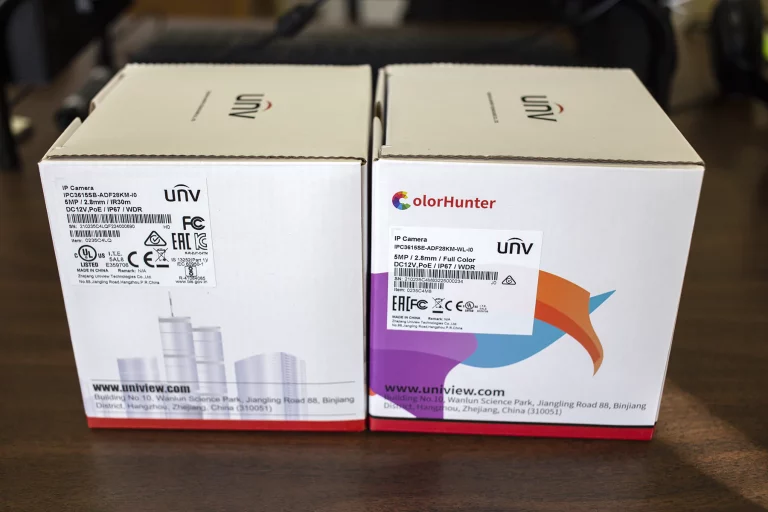
Testing Uniview’s LightHunter & ColorHunter Cameras
In order to compare both cameras under similar lighting conditions, we decided to run the test indoors. Lighting conditions varied between full brightness (indoor lighting) and minimal brightness from a small 2.5 lumen night light. This small light source was pointed 180° opposite our scene; only reflected light was able to reach our test setup.
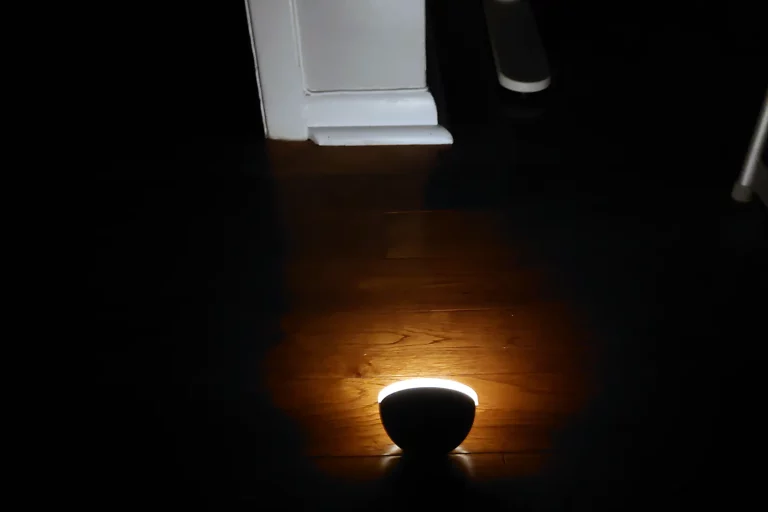
Our testing setup consisted of a floor mat with various stuffed animals, covering a wide range of sizes and colours. We powered the cameras via a PoE injector and connected the injector to our laptop. Both cameras were left at default settings, and snapshots were taken in .bmp format from EZStation 3.0. The photos have been compressed using the. webp format, but no other adjustments were made.
In addition, we took photos using a Sony Xperia 5 II and iPhone XS to serve as references for low-light capabilities.
Results – Uniview 5MP LightHunter (IPC3615SB-ADF28KM-I0)
Snapshot 1 – Lights ON, Full Colour
First, we turned the lights on to see how the camera performs in bright environments. With good lighting, the 5MP LightHunter has no issues accurately capturing the scene. The colours are bright, vivid, and similar to how they appeared in real life. Additionally, there is very minimal barrel distortion towards the center of the lens.
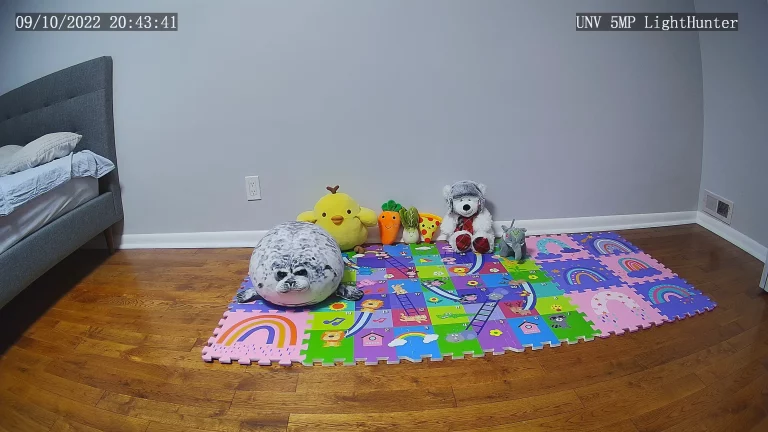
Snapshot 2 – Lights OFF, Infrared Light ON
Next, we turned the lights off, with only our 2.5 lumen light helping to illuminate the scene. Unfortunately, this wasn’t enough for the camera to stay in day mode; the built-in IR turned on and the scene changed to black and white. See for yourself from the image below:
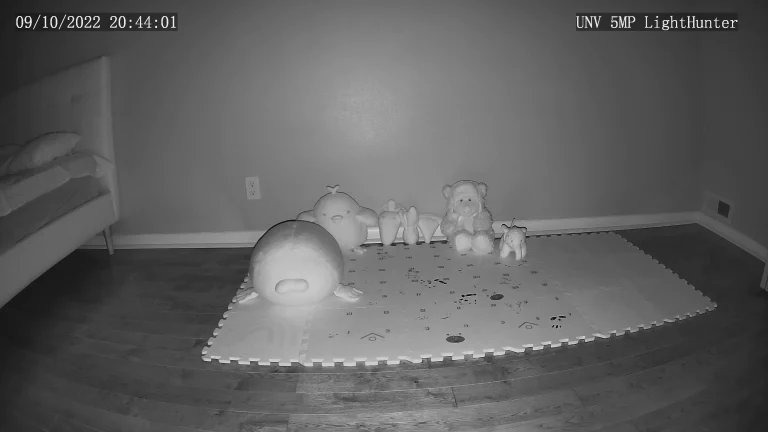
Snapshot 3 – Lights OFF, Infrared Light OFF
In our last snapshot from the 5MP LightHunter, we forced the camera into day mode to see how much light it was able to gather. With only the reflected light of the 2.5 lumen source reaching the scene, there is less then 1 lux of light reaching the Uniview camera. Although we see a lot of noise in the image, there is still enough colour information to tell reds, blues, and greens apart.
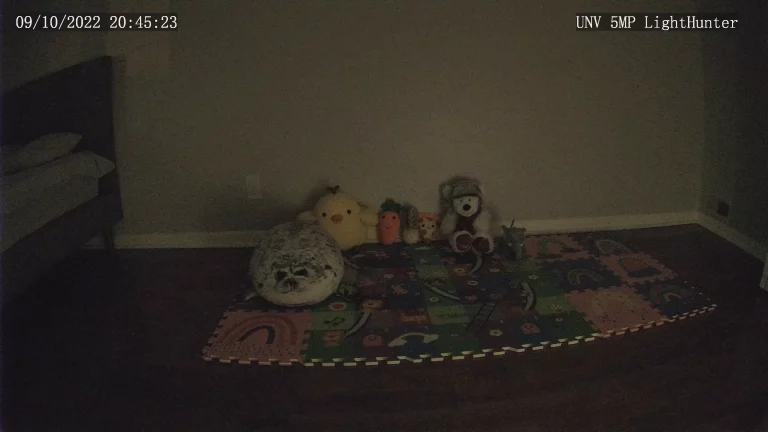
Results – Uniview 5MP ColorHunter (IPC3615SE-ADF28KM-WL-I0)
Snapshot 1 – Lights ON, Full Colour
The second camera we tested was Uniview’s 5MP ColorHunter; the first snapshot was taken with the lights on. Here, we see results that are very similar to the previous camera: Colourful image, vivid details, and little to no distortion towards the center of view of the image.
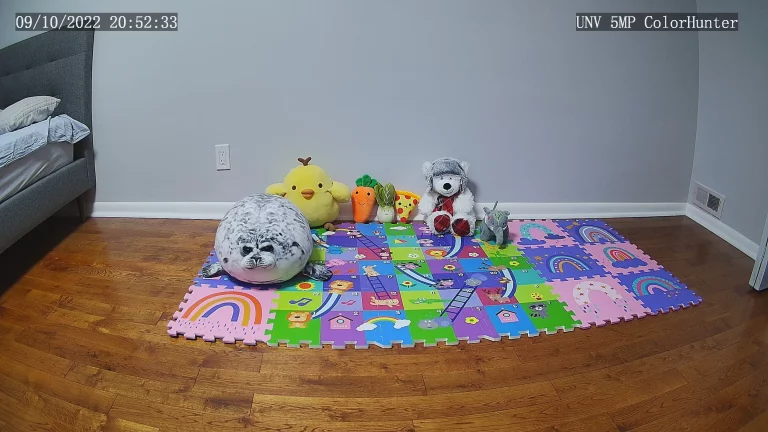
Snapshot 2 – Lights OFF, White LED ON
In order to really see the differences between LightHunter and ColorHunter, we need a dark environment. For the second test, we turned the lights off, allowing the camera to switch into night mode. While in night mode, the camera’s white LEDs turn on to provide additional illumination. This gave us an image that was very pleasant to look at, a huge improvement compared to the LightHunter camera!
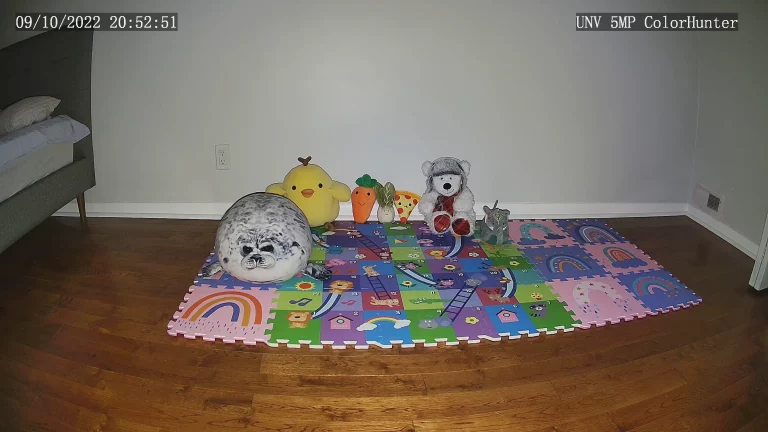
Snapshot 3 – Lights OFF, White LED OFF
Finally, we turned the built-in ColorHunter LED off to see how well it captures light of its own accord. Again, only the 2.5 lumen backlight was providing any illumination in the room; surprisingly we saw a clearer and more colourful image compared to the Uniview LightHunter. We speculate this is due to a wider aperture: F1.0 for ColorHunter vs 1.6 for LightHunter.
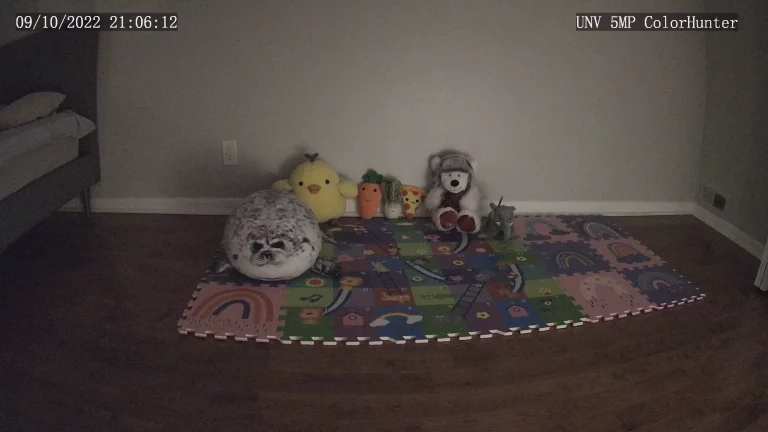
Smartphone Performance in Low Light (iPhone XS and Sony Xperia 5 II)
We’ve seen how Uniview LightHunter and ColorHunter cameras perform in dark scenes, but how about smartphones? We took pictures using an iPhone XS and Sony Xperia 5 II phone to see how they stack up against CCTV cameras specifically designed with low light performance. Both photos were taken using the default photo app from each phone, with flash set to off.
Originally, the photos came out almost completely black; we had to increase the exposure by +7 EV using Photoshop to see anything at all. The results were not great, which is to be expected. Uniview LightHunter and ColorHunter cameras are made for the recording in low light, while smartphones are not.
Sony Xperia 5 II - Low Light for Comparison
iPhone XS - Low Light for Comparison
Final Thoughts
Overall, both Uniview’s LightHunter and ColorHunter cameras perform well at night in dark environments. The 5MP ColorHunter performs better at night thanks to its built-in white LED light. Also, it has a slight advantage in low light conditions thanks to a larger aperture, resulting in a brighter image than Uniview’s 5MP LightHunter camera.
For suggestions on which camera to purchase for your project, or other related inquiries please contact XLR Security via email info@xlrsecurity.com or phone 905-794-5508. We look forward to helping you with any security related business or activities!

